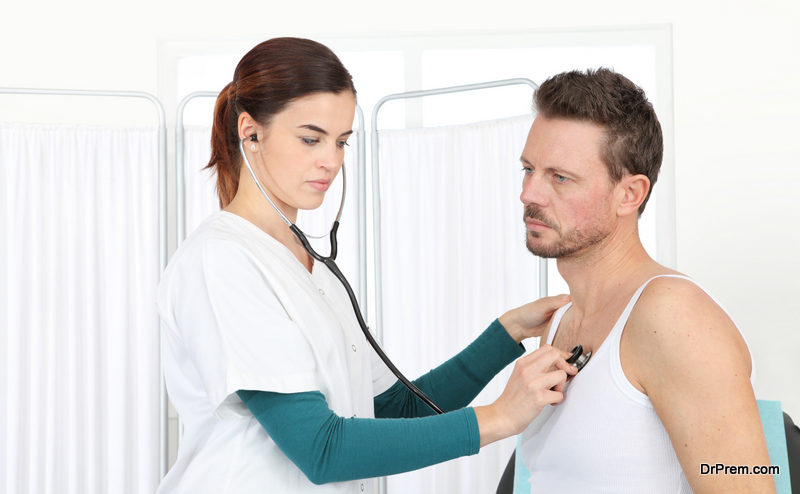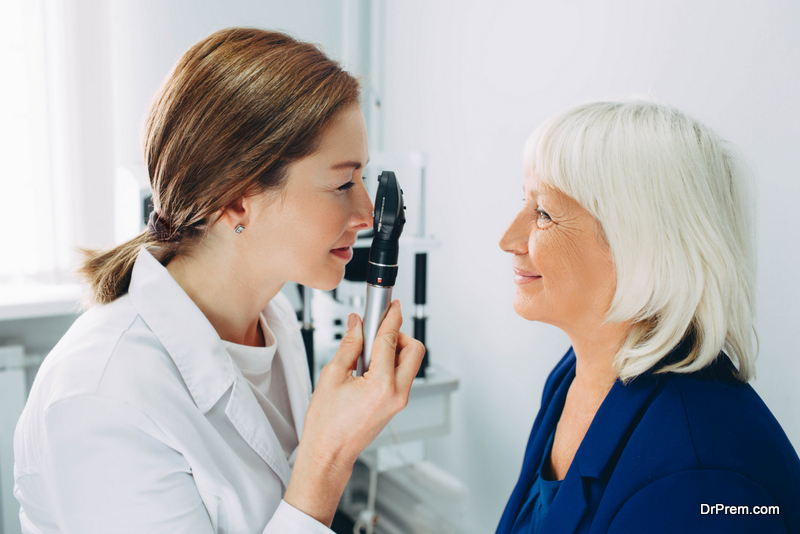Have you been avoiding seeing the doctor? Does the thought of even a routine check-up make you nervous? One of the main reasons people avoid going to the doctor is the fear of the unknown. You may be asking yourself questions like, “Will I need a shot?” or “Are they going to send me for tests?” The truth is, you won’t know until you go. And avoiding the doctor is putting your health at risk. Doctors have a wide range of tools they use in the office for routine exams. Understanding what these tools are and how they’re used might help quell some of your fears. Keep reading to discover some of the most common tools found in most doctors’ offices.
1. Scale
 One of the first things the doctor will do when you arrive is check your weight and height. This is done regardless of your age. Your doctor wants to monitor your weight for several reasons. First, is to see if you’ve experienced unexplained weight gain or weight loss. This could be a sign of several things including poor diet, thyroid issues, or other underlying illnesses. Your doctor will discuss any drastic changes in your weight to help determine the cause and offer treatment options. Your height is also important when it comes to bone health. As you age, your bone density and strength weakens. This may actually cause you to shrink. This actually starts as early as age 30! And continues well into your 70s. It’s a normal part of the aging process. When it comes to children and adolescents, doctors monitor growth in terms of where the child falls within the national average. This helps them determine whether or not the child is growing at a healthy pace. Most offices now use digital scales to monitor this information. These kits and others help professionals ensure their equipment is calibrated correctly and up to standard.
One of the first things the doctor will do when you arrive is check your weight and height. This is done regardless of your age. Your doctor wants to monitor your weight for several reasons. First, is to see if you’ve experienced unexplained weight gain or weight loss. This could be a sign of several things including poor diet, thyroid issues, or other underlying illnesses. Your doctor will discuss any drastic changes in your weight to help determine the cause and offer treatment options. Your height is also important when it comes to bone health. As you age, your bone density and strength weakens. This may actually cause you to shrink. This actually starts as early as age 30! And continues well into your 70s. It’s a normal part of the aging process. When it comes to children and adolescents, doctors monitor growth in terms of where the child falls within the national average. This helps them determine whether or not the child is growing at a healthy pace. Most offices now use digital scales to monitor this information. These kits and others help professionals ensure their equipment is calibrated correctly and up to standard.
2. Blood Pressure Cuff
Regardless of your age or current state of health, your doctor will take your blood pressure using a cuff and a stethoscope (more on that later). Your blood pressure reading consists of two numbers — systolic pressure and diastolic pressure. A normal blood pressure reading is 120/80 (read 120 over 80). This first number (120) is known as the systolic pressure and indicates how much pressure your blood is pushing through your arteries each time your heart beats. The second number (80) is the diastolic pressure and is the amount of pressure your blood exerts during periods of rest, between heart beats. Using this device, your doctor can determine if you have high or low blood pressure. The cuff will tighten around your arm, allowing the doctor or nurse to feel and hear your pulse (or heart beat). They hear this by slipping the head of the stethoscope between the cuff and your arm. Though uncomfortable, a blood pressure reading doesn’t hurt and only takes a matter of moments to complete.
3. Stethoscope
 This is the tool most synonymous with doctors. The stethoscope is used to listen to your heartbeat, lungs, and take your blood pressure, as mentioned above. You’ve probably seen doctors in television shows and movies walking around with this tool around their neck. A stethoscope allows doctors to perform some of the most basic and routine checks of any physical exam.
This is the tool most synonymous with doctors. The stethoscope is used to listen to your heartbeat, lungs, and take your blood pressure, as mentioned above. You’ve probably seen doctors in television shows and movies walking around with this tool around their neck. A stethoscope allows doctors to perform some of the most basic and routine checks of any physical exam.
4. Otoscope
When it comes to checking your ears and nasal passage, the otoscope is a common tool found in any doctor’s wheelhouse. The cone-shaped attachment goes on the tip of a small, handheld flashlight. It allows doctors to thoroughly examine the ear canal for any infections, obstructions, or wax build up. Another tool known as a pneumatic otoscope allows doctors to deliver a small puff of air into the canal. This is used to make the eardrum vibrate, which is a normal and healthy reaction. None of the above mentioned exams cause any pain or discomfort, unless you have an underlying issue.
5. Ophthalmoscope
 The last of the “scopes” on this list, the ophthalmoscope is used by doctors to examine your eye. The tool allows doctors to safely view your retina, lens, and even the optic nerve. While you should still see an opthamologist for any vision-related issues, a basic eye exam is a common part of any routine visit to your primary doctor. The tool looks much like the otoscope in terms of being a handheld light, except the ophthalmoscope also has a concave mirror and monocular eyepieces. The doctor can easily examine your eye from different angles and depts. In addition, your doctor will have you cover one eye at a time and read numbers, letters, and colors from an eye chart to determine if you’ve had any changes in eyesight. If your doctor doesn’t perform this part of the exam but you’ve been experiencing headaches or blurred vision, mention it to them during your visit.
The last of the “scopes” on this list, the ophthalmoscope is used by doctors to examine your eye. The tool allows doctors to safely view your retina, lens, and even the optic nerve. While you should still see an opthamologist for any vision-related issues, a basic eye exam is a common part of any routine visit to your primary doctor. The tool looks much like the otoscope in terms of being a handheld light, except the ophthalmoscope also has a concave mirror and monocular eyepieces. The doctor can easily examine your eye from different angles and depts. In addition, your doctor will have you cover one eye at a time and read numbers, letters, and colors from an eye chart to determine if you’ve had any changes in eyesight. If your doctor doesn’t perform this part of the exam but you’ve been experiencing headaches or blurred vision, mention it to them during your visit.
6. Tongue Depressor
In addition to a small light, your doctor might use a tongue depressor to help see inside your mouth and throat. These flat, wide wooden tools are another staple in most doctors’ offices. If you’re able to open your mouth wide enough and say “ah”, the doctor may not need a depressor. But for those patients who struggle to open their mouths, the doctor will gently apply pressure to your tongue using the depressor in order to get a good view of your throat and tonsils. This is done during routine exams and when checking for strep throat or other complications. If a strep test is required, the doctor will take a swab from the back of your throat and test it using a culture. Rapid results are usually ready within minutes of the test. Your doctor will also examine your throat by feeling the glands on the outside of your neck to determine if they’re swollen.
As you can see, none of these tools are overly invasive or scary. And they’re surely not a reason to avoid seeing the doctor for a routine exam. If you have questions during your visit, don’t hesitate to ask the doctor what an unfamiliar tool is, and why and how they plan to use it. You should be an active participant in your healthcare plan.
Article Submitted By Community Writer




